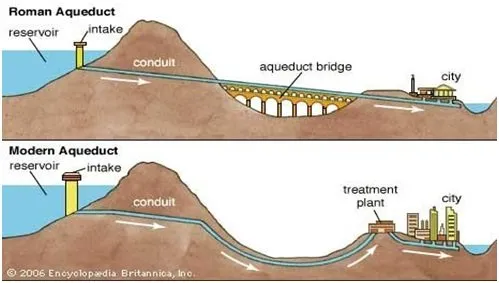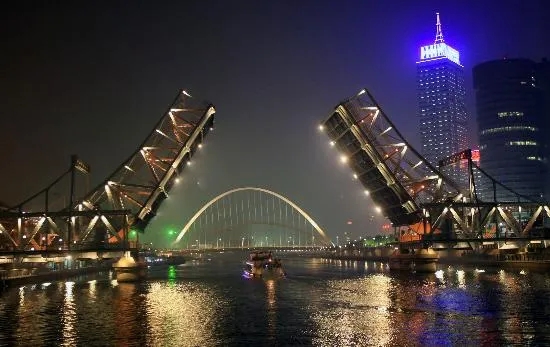Introduction to Bridges:
A bridge, the word’s origin traced on the Old English “brycg”, is a structure created to span physical obstacles, such as bodies of water or roads, without closing the way underneath. Bridges have been part of the human arsenal to mold the natural environment to its liking since antiquity. Ranging from wooden or stone proto-bridges made by early humans, to the historic bridge Arkadiko corbel arch Bridge of Mycenae and the great arch bridges of ancient Roman’s, bridges have been connecting far-off points since ages ago. The magnificent Akashi Kaikyō Bridge in Japan, is currently the world’s longest bridge. Of note is also the Duge Bridge, a cable-stayed bridge in China, which is considered the world’s highest bridge today. Another notable bridge is the Golden Gate Bridge, a suspension bridge spanning the Golden Gate strait between San Francisco Bay and the Pacific Ocean.
There exist a plethora of bridge types in the present-day. They can be categorized in several different ways, commonly including their structure type, by what they carry, whether they are fixed or movable and the materials they’ve been created by. After briefly reviewing the various prevalent categories, a few specific, exemplary instances of bridge design will be presented.

Types of Bridges:
By Structure Type:
- Arch Bridge: This type of bridge has a single or multiple arches below the bridge, depending on the load it is supposed to carry. They work through the transfer of the carried weight – and the weight of the bridge itself – to their curved arch shaped support columns.
- Beam Bridge: This type is probably the simplest form of a bridge. The bridge is supported by an abutment or pier at each end – the farther these supports are, the weaker the bridge gets. Therefore, in order to cover lengthy distances, multiple beam bridges must be joined together, creating a continuous span. The term “girder bridge” is often used interchangeable with “beam” in reference to bridge design. In modern design, the two most common shapes are plate and box girders.
- Cable-stayed Bridge: Pylons built near the bridge are used to support the main bridge deck. Those pylons act as the primary load-bearing structures, transmitting the bridge loads to the ground, with cables attached to them adding to their strength. There are many variations of design: Those pylons can slope, or they may have cables on one or both sides, for example.
- Cantilever Bridge: A bridge created through the use of cantilevers. A cantilever is a protruding structural element anchored at one end to some sort of support. In other words, in a cantilever bridge, one portion of the structure acts as an anchorage that sustains a second portion, which extends beyond the supporting pier.
- Covered Bridge: This type of bridge has a cover resulting in an almost complete enclosure of their bridge deck. Their usual purpose is to protect the vulnerable structural members of the bridge or the passing pedestrians from the effects of the weather.
- Overhead Power Line Bridge: A bridge operating with an overhead line that transfers electrical energy to trams, trains or trolleybuses. In places where tensioning the lines is not practical, for example on moveable bridges, rigid overhead rails might be used instead.
- Suspension Bridge: At first glance a close relative to the cable-stayed type, in a suspension bridge, the bridge deck is hung below suspension cables on vertical pylons. A cable runs from anchors on the ground, over the pylons. While this cable is subject to the force of gravity, it is held far above the road surface by the pylons. The bridge essentially hangs from the cable.
- Truss Bridge: Economical to construct through efficient material use, a truss bridge is one of the oldest of modern bridge types. Its load-bearing superstructure is a truss, a structure “consisting of two-force members only, where the members are organized so that the assemblage as a whole behaves as a single unit.”

By What They Carry:
Other than cars and vehicles, bridges are often used to transfer and carry other objects across their spans. Notable examples of such instances are the following:
- Aqueduct: Alternatively called water bridge, an aqueduct is a type of bridge constructed to transfer water across natural or man-made obstacles. Commonly associated with the Roman Empire, aqueducts were first used ages before the Romans, by the Minoans at around 2000 BCE.
- Railroad Bridge: This type of bridge, alternatively called “combined bridge”, is used both by trains, hence the rail-lines and by cars, hence the road. There exist two main designs: The rail track being above or below the roadway, separately from the road cars use or it may share the same way with the cars, so that traffic stops when trains operate – or even both operating together akin to a tram in a street.

Fixed or Moveable:
Although the vast majority of bridges are fixed, meaning they are meant to stay in one place until disaster demolishes them, there exists a different, highly mobile variety, that of the moveable or temporary bridges.
- Temporary Bridges: This variety is a type of portable, pre-fabricated bridge. Made from basic, simple components it can be moved by medium or light machinery. A very common subtype, the Bailey Bridge, was developed during World War II for military use and saw substantive use. They are still used extensively in construction projects and to provide temporary crossing when fixed bridges are in a state of repair.
- Movable Bridges: Synonymous to a drawbridge, a moveable bridge is a bridge, often powered by electricity, with the built in ability to move for allowing passage to boats. The obvious disadvantage is that the traffic on the bridge has to stop when it opens up for passengers. A common subtype is the bascule bridge, operating like a balance or seesaw, by which the rising floor or section is counterbalances by a weight.

Notable Bridges:
- Golden Gate Bridge: One of the most internationally recognized symbols of the United States and considered one of the Wonders of the Modern World, this suspension bridge is one mile wide and one-point-seven mile long. It links the city of San Francisco, California to Marin County, carrying both U.S Route 101 and California State Route 1 across the strait.
- Dearborn River High Bridge: A half-deck truss bridge built in 1897, it is one of the few bridges of its type left standing in the States. It crosses the Dearborn River on Lake Bean Road southwest of Augusta, Montana. Its unusual design suits it to carry light loads across high or deep crossings.
- The Iron Bridge: Crossing the River Severn in Shropshire, England, is an excellent example of an arch bridge. Opened in 1781, it was the first major bridge made of cast iron, and was greatly celebrated after construction in virtue of its use of the new material.
- London Garden Bridge: The article wouldn’t be complete without mention of this highly ambitious project. While not yet completed, this project aspires to create a new, stunning public garden crossing spanning the River Thames. It will feature plants, trees, woodland and meandering walkways to be used and enjoyed by all, adding to London’s already rich horticultural heritage. Hopefully, it won’t be cancelled as it quite unique.


